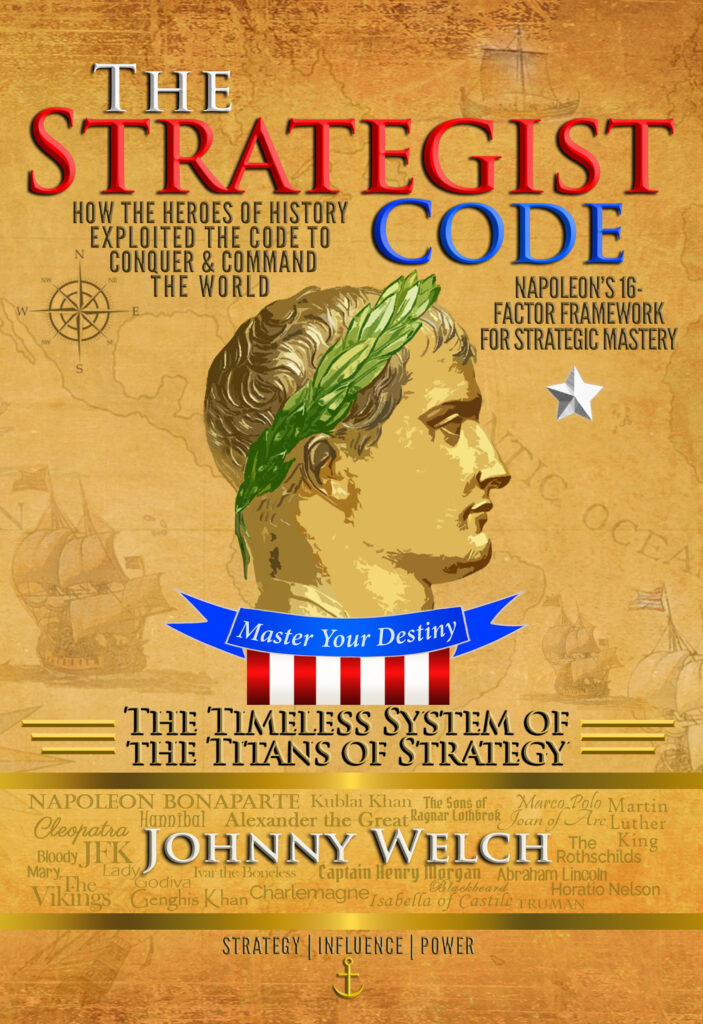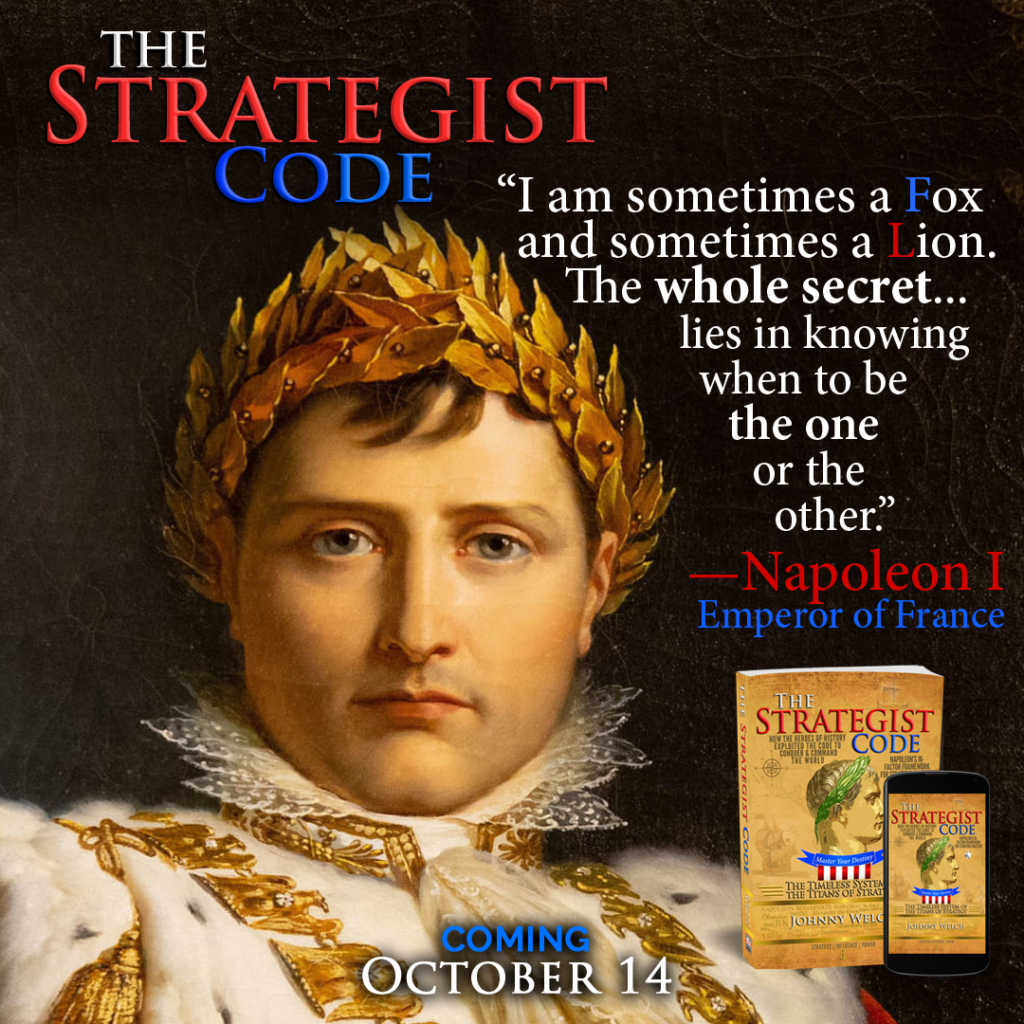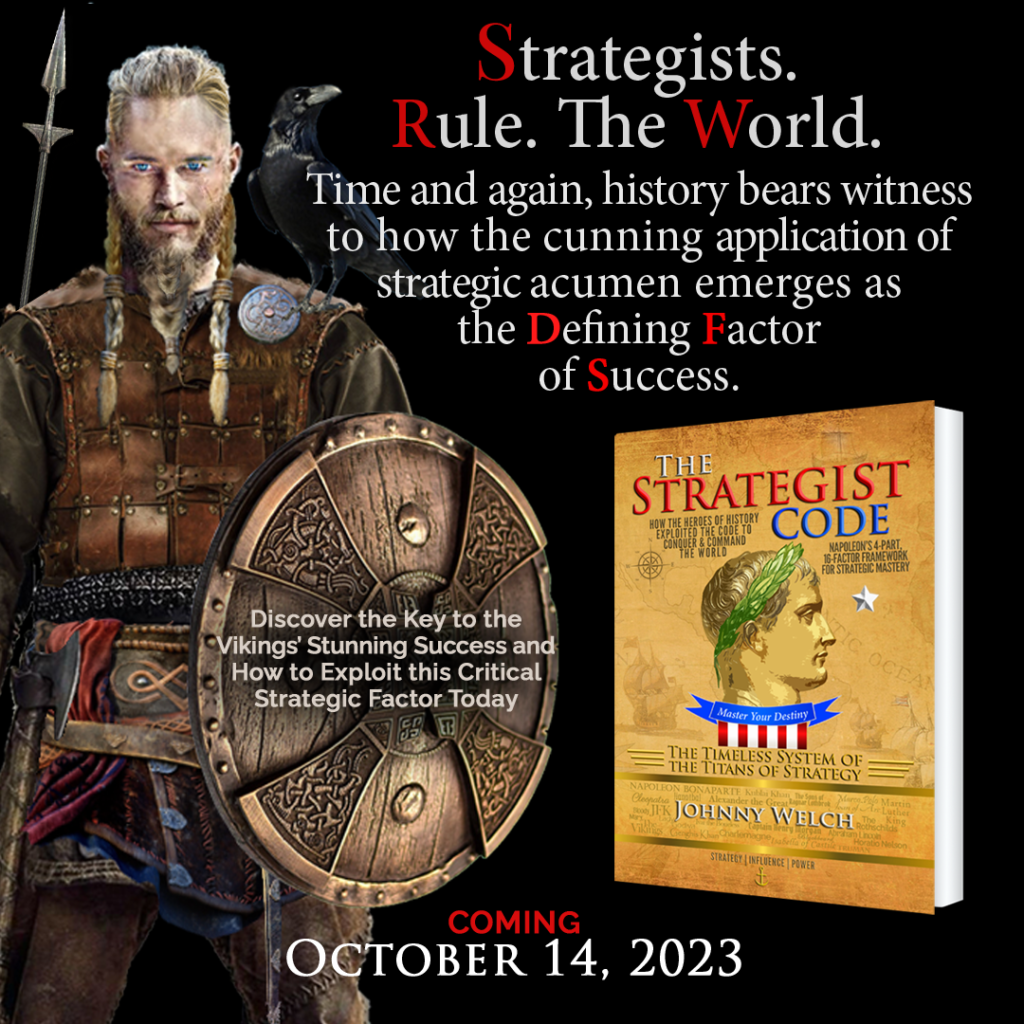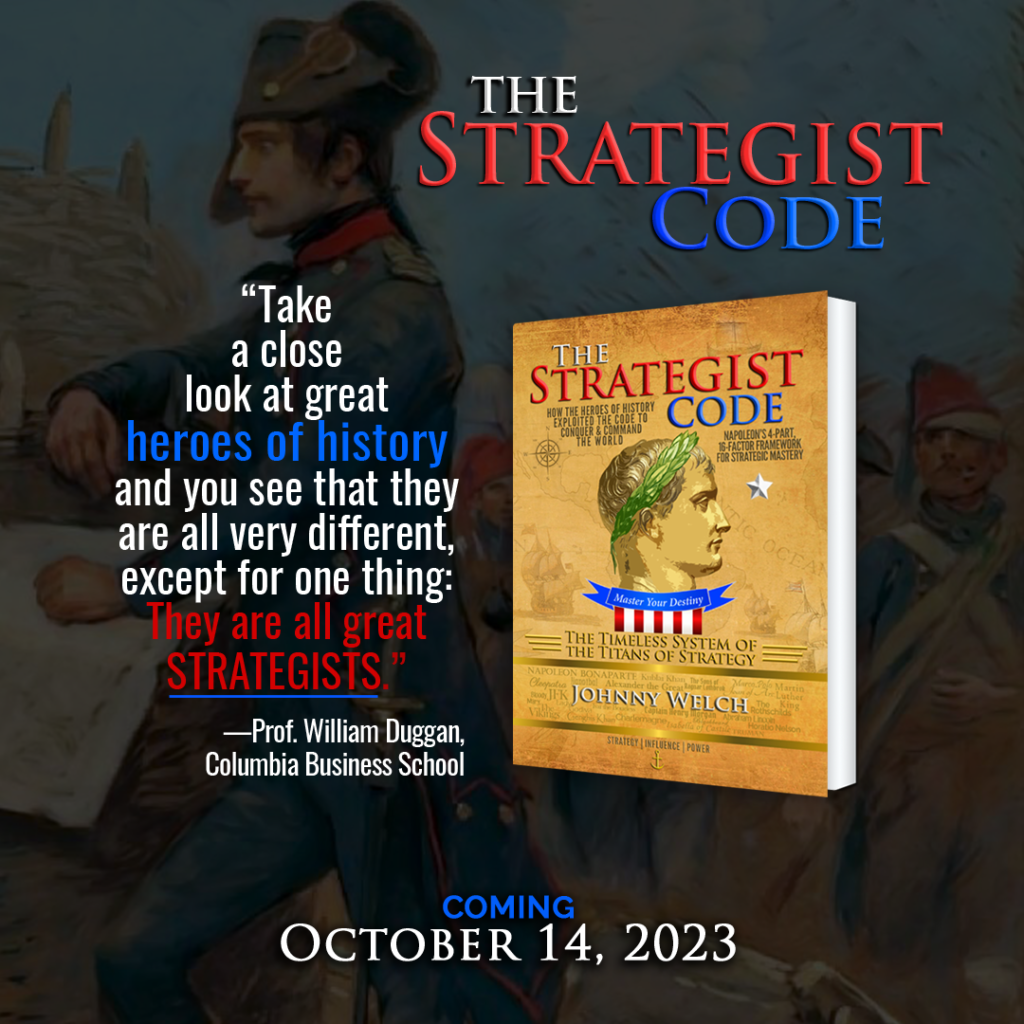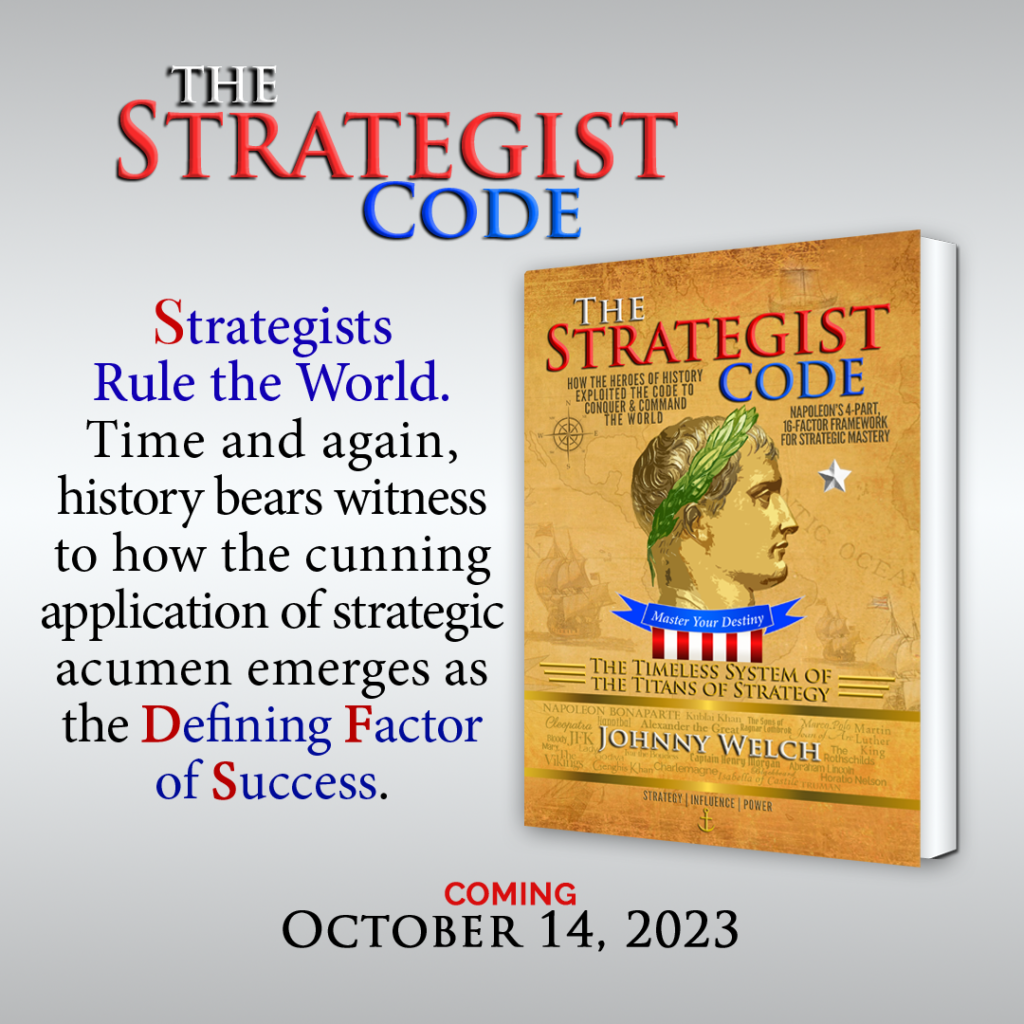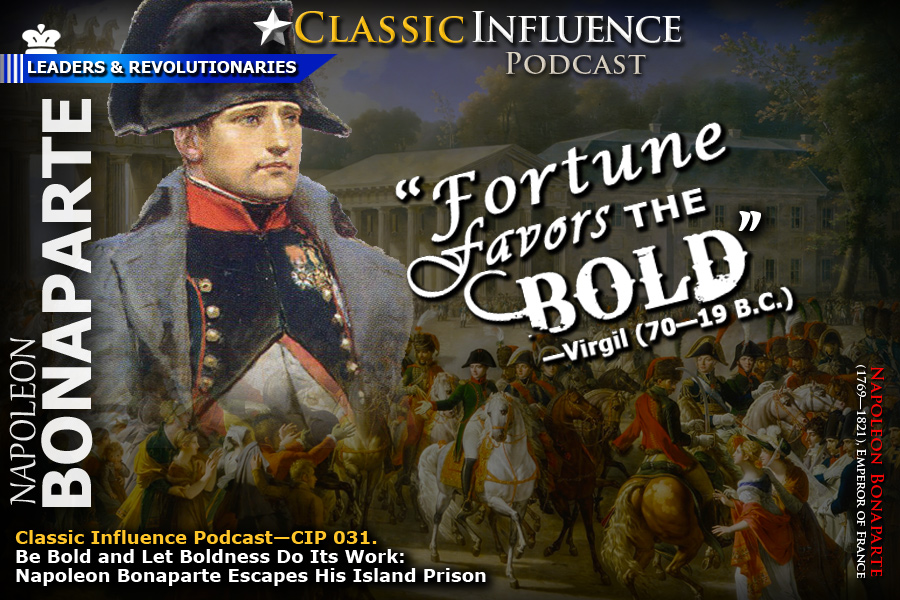The Master Strategists
List of History's Titans of Strategy
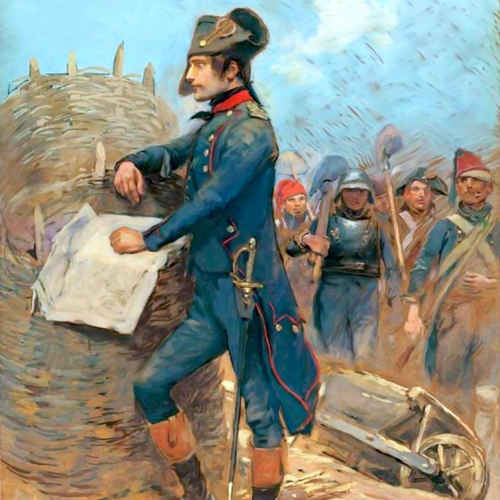
When the 24-year-old Napoleon Bonaparte burst onto the scene on that fateful day of September 16, 1793, the Siege of Toulon was ensnared in a stalemate. Toulon, “the most important naval arsenal of the country,” had been delivered into the hands of English and Spanish forces, leaving the French revolutionary leaders desperate to retake their prized port city. Alas, the Frenchman in charge of the siege, General Carteaux, was clearly clueless about how to conduct a siege, especially of a city surrounded by a string of formidable and well-fortified fortresses.
Napoleon, in contrast, still a humble artillery officer with no “real military experience,” recognized immediately what had to be done to retake Toulon. Despite facing staunch resistance from his superiors, grappling with a dearth of artillery and supplies, and an initial lack of preparation and training, Napoleon embarked upon a strategic plan that would reshape the course of the siege. In a mere 90 days, he orchestrated a masterful symphony of tactics, effectively routing the English and their allied forces and, thereby, rescuing the French Revolution from the precipice of failure. This remarkable feat not only led to Napoleon being celebrated as a hero, but also won him the prestigious promotion to the rank of brigadier general while still only 24. Little did the world know that his triumph at Toulon, in which he demonstrated his mastery as a strategist and tactician, would ignite the fuse of his meteoric rise to power.
Yet, the story of Napoleon’s victory at Toulon is merely one episode in the grand tapestry of history, which teems with tales attesting to the transformative power of strategy. Consider just a handful of other notable examples:
The Master Strategists
The Ultimate List of History’s Greatest Strategic Minds

- Homer: (circa 8th century B.C.), One of history’s most influential writers, Homer was a brilliant strategist operating in the guise of a Greek poet renowned for authoring the epic poems the Iliad and the Odyssey. Although Homer isn’t traditionally thought of as a strategist, his works exhibit the mind of a strategic master. In the Iliad, Homer portrays the Trojan War as a conflict between the Greek and Trojan armies, each with their own battalion of leaders and strategies. His descriptions of the battles reveal advanced strategic thinking, with maneuvers like feints, ambushes, and surprise attacks showing meticulous tactical planning. Homer also illustrates the hero Achilles as a tactical genius who outsmarts his opponents through intellect rather than brute strength. Achilles is shown anticipating and countering his enemy’s moves like a skilled strategist, demonstrating how strategy can triumph over brawn. The Odyssey further spotlights Homer’s strategic prowess, particularly through the crafty Odysseus, who often relies on cunning and trickery to achieve his goals. Through this consummate trickster, Homer conveys how strategy and deception are often integral to victory and success.

- Sun Tzu: (circa 544—496 B.C.), the ancient Chinese military strategist and philosopher, is best known for his timeless work The Art of War, likely written around the 5th century B.C. In The Art of War, Sun Tzu lays out principles of strategy, tactics, maneuvering, and planning that have influenced military and political thinkers over the past two millennia. His teachings on building alliances, positioning, element of surprise, deception, and using weakness against strength have found applications well beyond the military sphere, impacting business, legal negotiations, and sports. The Art of War remains an influential work on strategy, leadership and management to this day.

- Thucydides : (circa 460—395 B.C.) was an ancient Greek historian and general. Thucydides, is best known for his epic work “History of the Peloponnesian War” which chronicles the conflict between Athens and Sparta from 431 to 404 B.C. His writings provide valuable insights into the nature of warfare, politics, strategy, tactics, and human behavior. Thucydides is widely esteemed as the first scientific historian due to his efforts to provide an objective and analytical account of events, seeking to determine the underlying causes and influences.

- Alexander the Great: (356—323 B.C.) a genius military strategist, during his reign from 336 B.C. until his death in 323 B.C., Alexander conquered much of the known world. His innovative battle tactics and ability to inspire his troops allowed him to overrun the massive Persian Empire and spread Hellenistic culture across Asia Minor and into Egypt and India. At the height of Alexander’s empire, his generals governed territories stretching from Greece to the Indus River Valley – one of the largest empires in the ancient world at that time.
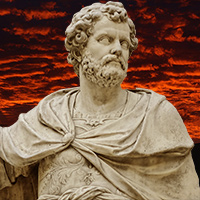
- Hannibal Barca: (247—183/181 B.C.), the Carthaginian general and military genius, is legendary for his astonishing victories against overwhelming odds during the Second Punic War (218–201 B.C.). In 218 B.C., Hannibal accomplished one of history’s greatest feats of logistics and leadership by crossing the treacherous Alps with his army, which included war elephants and cavalry—a feat few generals today could replicate. But Hannibal’s finest hour came at Cannae in 216 B.C. where he demolished a Roman army twice the size of his own in a masterpiece of strategic warfare. Through the cunning use of terrain, double envelopment tactics, and psychological warfare, Hannibal slaughtered close to 70,000 Romans—one of the worst defeats in Rome’s history. Cannae cemented Hannibal’s place as one of the greatest generals and strategists the world has ever known. Despite winning more battles against the Romans, Hannibal lacked the reinforcements from Carthage he needed to end the war. After 16 years of campaigning in Italy, he was recalled to North Africa in 202 B.C. Hannibal was ultimately defeated by Scipio Africanus at Zama in 201 B.C., ending the Second Punic War. Hannibal’s crossing of the Alps and victory at Cannae continue to astound today. They prove that with strategic brilliance, audacity, and unparalleled generalship, even the massive war machine of Rome could be severely challenged by one of history’s finest military minds.
- Julius Caesar: (100—44 B.C.), a Roman general and statesman, is known for transforming the Roman Republic through his military and political accomplishments.Between 58 BC and 50 BC, Caesar conquered much of Gaul (modern France and Belgium) and twice invaded Britain in what proved a training ground for his legions. Caesar’s Gallic Wars demonstrated his strategic brilliance, tactical adaptability, and ability to overcome daunting logistical challenges – all while in command of legions that eventually swelled to nine in number. His innovative and flexible battle tactics, skillful use of terrain, and capacity to adapt to any situation earned him a reputation as a military genius and master strategist.After defeating Pompey and consolidating his power in Rome, Caesar implemented a series of political, social and economic reforms that reshaped the Republic. Despite amassing tremendous power and influence, Caesar refused the title of king, instead styling himself “dictator for life” in 46 B.C. On the Ides of March 44 B.C. (March 15th), Caesar was assassinated by a group of senators fearful of his ambitions. However, his military and political accomplishments would cast a long shadow over Rome for centuries. Caesar’s intrigues with Cleopatra VII, the last Ptolemaic ruler of Egypt, would also have lasting historical repercussions. Their affair produced Caesarion, whom Cleopatra claimed was Caesar’s son and heir.
- Genghis Khan: (1160—1227), the fearsome Mongol warrior and ruler, united the fractured Mongol tribes and conquered more territory than any other person in history. Around 1206, the tribal chief Temujin took the title Genghis Khan, meaning “Universal Ruler,” and set out to conquer the world. Over the next 20 years (circa 1206—1227), Genghis and his Mongol horsemen swept across the Eurasian landmass in a series of lightning campaigns that left millions dead and entire civilizations in ruins. Genghis’ military genius lay in his mastery of mobility and psychological warfare. His lightly-armed cavalry could move faster and strike harder than any army of the time. His tactics included feigned retreats, encirclements and pre-dawn attacks – designed to spread terror and maximize plunder. The Mongol army’s lethality, combined with Genghis’ vision and charisma, allowed this small nomadic tribe to conquer most of China by 1215 and the Islamic Khwarezmid Empire by 1221. By his death around 1227, Genghis had unleashed the Mongol horde that would go on to build the largest contiguous empire in history. The rapid expansion of the Mongol Empire under Genghis was unprecedented, leaving countless stories of the Mongols’ barbarity in their wake. But it also fostered trade, cultural exchange and the spread of new technologies across Asia and into Europe. Genghis Khan’s empire, built on the back of his strategic and tactical brilliance, forever altered the course of human history.
- Niccolò Machiavelli : (1469—1527), the brilliant Italian diplomat, philosopher and strategist, revolutionized political thinking with his ruthlessly pragmatic approach to gaining and wielding power. In his masterwork The Prince, published posthumously in 1532, Machiavelli urged leaders to be cunning, deceptive and ruthless if necessary when seizing power and maintaining control. Instead of relying on moral or ethical arguments, Machiavelli advocated a more practical and expedient use of violence and force in statecraft. Though he wrote The Prince as a handbook for an Italian leader, his wider arguments about the amoral essence of political power have significantly impacted the strategies and tactics employed in warfare and governance ever since. Machiavelli’s stark and brutally honest perspective, devoid of moralizing, shocked readers of his time – as it still does today. But his treatise also offered timeless insights into the realpolitik of political leadership and the fierce struggles for dominance that shape human affairs. In emphasizing the importance of will, cunning and ruthlessness in rulers, Machiavelli forever altered future strategists’ views of the role of power, deception and expediency in expanding and maintaining their realms. For all this, he rightly earned his place as one of history’s most influential political thinkers and master strategists.
- Admiral Horatio Nelson: (1758—1805),Admiral Horatio Nelson, 1st Viscount Nelson, a maverick in his time, brought a fresh and audacious approach to naval warfare. He was a firm advocate of the principle that the best defense is a vigorous offense. Rather than biding his time, Nelson was known for taking the bull by the horns, bringing the battle to the enemy’s doorstep. He surrounded himself with a cadre of trusted captains, his so-called “band of brothers.” This close-knit group was the backbone of his fleet, their bond enabling fluid tactics and seamless coordination on the high seas. Nelson was not one for convention. Instead of the traditional ship-to-ship formation, he boldly led his fleet through the heart of the enemy line. This daring maneuver allowed his ships to attack from both flanks, plunging the enemy into disarray. But Nelson’s genius was not limited to tactical innovation. He was a master of the mind game of strategy, understanding the crucial role of psychological warfare. His inspirational leadership and indomitable spirit were infectious, instilling a fierce fighting spirit in his men. His personal courage and magnetic charisma were the secret ingredients to his many victories. Nelson was a leader who trusted his officers implicitly. He gave his captains considerable autonomy, confident they would act in line with his overarching strategy. This trust was encapsulated in his legendary signal at the Battle of Trafalgar: “England expects that every man will do his duty.” Nelson knew that the heart of a sailor was as important as the cannon of a ship. His rousing leadership and personal bravery ignited his sailors, filling them with a fervor for victory and an unwavering belief in their cause. In the historic Battle of Trafalgar in 1805, Nelson’s audacious tactics and inspiring leadership led to one of Britain’s most resounding naval victories against a superior Franco-Spanish fleet. Nelson’s legacy is a testament to the power of bold aggression, tactical flexibility, and unwavering trust in one’s officers. His understanding of the importance of morale, coupled with his innovative spirit, forever changed the face of naval warfare, influencing generations of strategists to come.
- Carl von Clausewitz: (1780—1831), a Prussian general and military theorist, is best known for his seminal work “On War” published posthumously in 1832. In “On War,” Clausewitz explored the nature and character of war based on his experience in the Napoleonic Wars. He viewed war as a complex, unpredictable human enterprise deeply connected to politics and the societies that wage it. Clausewitz is famous for stating that “War is not merely a political act, but also a real political instrument, a continuation of political commerce, a carrying out of the same by other means.” His concept of “absolute war,” the idea that once nations engage in war they will commit all their resources towards victory, had a major influence on 19th and 20th century military thought. Clausewitz’s theories continue to influence modern scholars, strategists and military leaders.
- Antoine-Henri Jomini: (1779—1869), a Swiss officer who served in both the French and Russian armies, was a contemporary and rival of Carl von Clausewitz. Jomini was a prolific military theorist and writer whose most influential work, “The Art of War,” published in 1836, sought to comprehensively systematize the principles of warfare.In The Art of War, Jomini emphasized key concepts that would influence 19th century military thought, including the importance of lines of operation on which an army advances, the advantage of interior lines which allow one army to shift units more readily against an enemy’s limbs, and the concentration of superior forces at the decisive place and time. His emphasis on the geometrical and geometric aspects of Napoleonic warfare contrasted with Clausewitz’s more philosophical exploration of the nature of war in On War. Though often overshadowed by Clausewitz, Jomini’s systematic method of analysis and precise terminology influenced military thought for decades after the Napoleonic Wars, becoming staples of 19th century staff colleges.
- Alfred Thayer Mahan: (1840—1914), the highly influential American naval strategist and historian, transformed how the world thought about the role of sea power in international relations and strategic planning. In his landmark book The Influence of Sea Power upon History, published in 1890, Mahan put forth a strategic vision that naval power determined the rise and fall of great nations. He argued that control of the seas – particularly through dominance of key trade routes and foreign naval bases – was essential for any aspiring global power. Mahan’s ideas sparked fierce debate among naval planners worldwide and reshaped maritime policies across the globe. In the United States, his theories led policymakers to abandon their previous hesitance towards overseas expansion and embrace the construction of a modern blue water navy. In his time, few predicted the profound impact Mahan’s theories would have on world affairs. But by envisioning sea power as an instrument of global policy and power projection, this unlikely naval strategist gave his country—and other ambitious nations—an ambitious blueprint for geopolitical expansion and global military reach. His clarity of thought, expressed through timeless principles of strategy, shaped the United States’ emergence as a global superpower and influenced great power rivalry on the high seas for generations to come.
- B.H. Liddell Hart: (1895—1970), the eminent British military strategist, historian and theorist, revolutionized modern warfare by developing the concept of the “indirect approach.” In his seminal work Strategy, published in 1954, Liddell Hart argued that the most effective way for a weaker military power to defeat a stronger opponent was to avoid frontal assaults and direct confrontations, where the enemy’s strength predominated. Instead, he urged strategists to identify and aggressively exploit an enemy’s weaknesses through maneuver, disruption of lines of supply, and psychological dislocation. Liddell Hart’s ideas, developed through historical study, found application during World War II as British generals used maneuver and deception instead of costly frontal assaults against German forces. His call for flexibility, mobility and opportunism also anticipated the rise of mechanized and airborne warfare in the latter half of the 20th century. But more importantly, Liddell Hart’s profound insights illuminate timeless truths about the art of war and the essence of generalship. In envisioning strategy as the carefully calibrated application of force—avoiding direct clashes unless utterly necessary—Liddell Hart’s ideas still challenge strategists today to think creatively, exploit the enemies’ vulnerabilities and pursue victory through maneuver rather than sheer brutality. Few military historians have done as much to shape debates on the role of strategy, flexibility and indirection in the conduct of war.
Now, from Harvard-and-Columbia-trained-researcher Dr. Johnny Welch, drawing on thousands of hours of rigorous research and over a decade of experience teaching graduate courses on leadership and strategy, comes The Strategist Code: The Timeless System of the Titans of Strategy. Distilled from the shared wisdom and insights of the most crafty and shrewd strategic minds in history, this book is your blueprint for becoming a master strategist. Through Napoleon Bonaparte’s 4-Part, 16-Factor Framework for Strategic Mastery—the ultimate roadmap you need to succeed in today’s warp-speed world of fierce competition and chaotic change—you will learn the secrets of history’s master strategists. You will discover the wisdom and insights, the tactics and tools of the titans of strategy and how they exploited the Strategist Code to command and conquer the world.
- DISCOVER the secrets of the strategist mindset and how to marshal it to outmaneuver and outshine those with deeper pockets, greater resources, and better intelligence.
- GAIN greater awareness and insight into the power of disciplined, strategic thinking and, drawing on the wisdom of President Kennedy during the Cuban Missile Crisis, learn how to think critically under pressure, improving decisions, actions, and results.
- DEVELOP a deeper understanding and new insights into the connection between unlearning, creative rethinking, and game-changing strategy; and how early adopters and innovative, pioneering, and experimental thinkers invariably accrue decisive strategic advantages.
- RECOGNIZE the surprising power, but often imprudent resistance to simplicity; why it is a critical success factor in war, politics, business and sports and how best to exploit its power without losing what is essential, meaningful, or distinct.
- DISCOVER the cardinal principle of strategic success and why Napoleon Bonaparte was obsessed with it.
- LEARN the formula for forging the synergistic strength of mutually assured success to gain a level of power and influence beyond what any independent leader, entrepreneur, or solo-operator could ever hope to expect.
- IDENTIFY the pivotal importance of agility to the success of great strategists and the critical tactics to employ to best exploit its power.
- UNDERSTAND the supreme importance of effective strategy execution and, drawing on the example of Captain Henry Morgan, discover the seven keys to successfully execute your strategy and ensure the realization of your ultimate chief purpose and goals.
The Strategies of the Master Strategists
The Strategies and Tactics of Some of History’s Greatest Strategic Minds
- The Greeks and the Trojan Horse: In the 12th century B.C., the Greeks devised a cunning strategy to slip past the defenses of the walled city of Troy. They hid an elite unit of warriors inside a giant wooden horse dedicated to Athena, which they left on the beach as an offering for their safe trip home. Alas, crafted with meticulous artistry, the Trojans took the colossal horse for themselves, wheeling it past their impenetrable gates and into the heart of their city. The consequences were dire. In their failure to think strategically and question the intentions of the gift-bearing Greeks, the Trojans unwittingly paved the path to their own downfall. The walls of Troy, once thought impregnable, crumbled beneath the weight of the Greeks’ strategic ingenuity. This seminal event showcases the profound influence of strategy, emphasizing the importance of critical thinking, anticipating the moves of one’s adversaries, and questioning your own prevailing assumptions. The Trojan horse not only shattered the walls of Troy but also forever etched into our collective consciousness the formidable power of strategic thinking.
- David vs. Goliath: In 1025 B.C., the Israelites and Philistines were on the cusp of war. Amidst the rising tension, a young shepherd boy named David emerged as a beacon of strategic brilliance. With the goal of defending the Israelites and averting a full-scale war, David devised a strategy to kill the giant, Goliath, the formidable champion of the Philistines. David astutely recognized Goliath’s vulnerabilities and resolved to leverage his own strengths. Armed with his superior skill with a slingshot, coupled with his greater speed and agility, David embarked on a high-stakes encounter. In a stunning display of precision and courage, he delivered a fatal blow, sinking a single stone deep into Goliath’s forehead. The Philistine giant fell face first into the dirt, struck down by David’s strategic prowess. David’s triumph immediately triggered the Philistines into a panicked retreat. David’s triumph against a much larger and more experienced opponent stands as a testament to the profound impact of strategic thinking, as David’s resourcefulness and calculated approach allowed him to overcome a formidable opponent, illuminating the path for future generations to perceive the true essence of triumph: the strategic utilization of one’s advantages to overcome seemingly insurmountable odds.
- Alexander the Great’s Macedonian Phalanx: Alexander the Great’s Macedonian Phalanx was a highly effective military formation that played a crucial role in his conquests. It consisted of heavily armed infantrymen called hoplites, organized in a tightly packed formation. The phalanx utilized a long spear called a sarissa, which provided reach and leverage over the enemy. The soldiers interlocked their shields, creating a wall of protection. This formation allowed for a powerful and disciplined advance, pushing through enemy lines and breaking their formations. The strength of the phalanx relied on its ability to maintain cohesion and coordination, with soldiers supporting each other and reacting as a unit. This formation proved particularly successful in pitched battles, where the phalanx’s disciplined and relentless approach overwhelmed enemy forces. Alexander used the Macedonian Phalanx as a key component of his combined arms strategy, integrating it with cavalry and other specialized units to achieve strategic victories and establish his empire.
- Alexander the Great and the Gordian Knot: Alexander the Great’s innovative thinking allowed him to “untie” the Gordian Knot, a complex and unsolvable problem, by cutting it with his sword, demonstrating the value of thinking unconventionally.
- Hannibal’s Double Envelopment: In 216 B.C., at the Battle of Cannae, Hannibal, the Carthaginian military commander, executed a classic double envelopment maneuver, encircling and annihilating a much larger Roman army.
- Zhuge Liang and the Empty Fort Strategy: During the Three Kingdoms period (220-280 A.D.) in China, the military strategist and engineer Zhuge Liang was tasked with defending a city against an invading force led by Sima Yi. Knowing his forces were heavily outnumbered, Zhuge Liang ordered the city gates to be opened. He then sat calmly on the city walls playing music as if everything was perfectly under control. When Sima Yi arrived he was unnerved by Zhuge Liang’s apparent lack of concern. He suspected a trap and immediately ordered his troops to retreat. Zhuge Liang leveraged his fearsome reputation as a strategic advantage, striking fear into the heart of his enemy. Zhuge Liang later became the Grand Chancellor (Prime Minister) of teh state of Shu Han.
- Alfred the Great vs. the Vikings: After decades of suffering the relentless surprise attacks of the Vikings, it was not until Alfred the Great came to power in 871 A.D. that the situation for the Anglo-Saxons began to change. Alfred’s visionary strategy was to transform the Anglo-Saxons’ entire system of defense. He recognized the need for a comprehensive military system to replace the slow and haphazard fyrd militias of the past. Along with establishing a mounted, standing army, Alfred built 33 fortified towns strategically positioned throughout Wessex. Alfred the Great’s strategy not only shifted the tides of battle but also laid the groundwork for the survival and eventual unification of England. His farsighted approach stands as a testament to the transformative power of strategic thinking, forever etching his name in the annals of history as a true visionary leader and master strategist.
- Genghis Khan: Genghis Khan’s (1162—1227) strategy can be summarized as a combination of swift and relentless military campaigns, strategic alliances, and effective governance. He united the Mongol tribes under his leadership, establishing a disciplined and highly mobile cavalry force. Genghis Khan’s strategy relied on lightning-fast surprise attacks, exploiting the element of surprise and overwhelming his enemies with superior speed, coordination, and tactics. He employed a decentralized command structure, promoting meritocracy and loyalty within his ranks. Genghis Khan formed alliances with neighboring tribes and used diplomacy to consolidate power and expand his empire. He implemented efficient administrative systems and promoted religious and cultural tolerance to foster stability and unity within his vast territories. His strategy prioritized adaptability, exploiting enemy weaknesses, and leveraging superior military capabilities to conquer and control vast territories across Asia and Europe.
- Giovanni di Bicci de’ Medici: (1360-1429) used a concentration strategy to win business and influence with high level leaders in the church until he was banker to the pope. Giovanni di Bicci de’ Medici employed several strategic approaches to establish the Medici bank as one of the wealthiest banking institutions of its time and secure the prestigious Papal account. His key strategies included:
- Building Trust and Relationships: Giovanni focused on cultivating strong relationships with influential individuals, including members of the clergy, nobility, and political leaders. By establishing trust and rapport, he gained access to lucrative financial opportunities and prestigious clients.
- Financial Expertise and Innovation: Giovanni emphasized financial expertise and introduced innovative banking practices. He modernized accounting methods, developed efficient money transfer systems, and pioneered the use of bills of exchange. These innovations boosted the bank’s reputation and attracted clients seeking reliable and efficient financial services.
- Patronage and Political Alliances: Giovanni actively engaged in patronage, supporting artists, scholars, and influential figures. By aligning the Medici bank with influential individuals and fostering political alliances, he gained support and protection, securing advantageous business opportunities and contracts.
- Geographic Expansion: Giovanni strategically expanded the Medici bank’s operations beyond Florence, establishing branches in key financial centers across Europe. This expansion facilitated international trade, increased the bank’s reach, and attracted a diverse clientele.
- Strategic Marriages: Giovanni arranged strategic marriages within his family, forging alliances with powerful families and consolidating wealth and influence. These alliances not only expanded the bank’s network but also elevated the Medici family’s social status and political clout.
- Rodrigo Borgia, Pope Alexander VI : As a strategist, Rodrigo Borgia, who later became Pope Alexander VI, is perhaps most famous for being the first to station ambassadors in the governments of influential cities and the courts of leading monarchs throughout Europe. This intelligence based strategy helped to inform Borgia’s foreign policy decisions but also led to a number of advantages for his family and allies. The Borgia Pope also employed a range of other strategies to consolidate power and advance his family’s interests during his papacy. Some of his key strategies included:
- Political Alliances: Pope Alexander VI sought to strengthen his position by forming strategic alliances with powerful political entities. He negotiated alliances with influential families, such as the Sforza and the Colonna, and established partnerships with foreign powers like Spain. These alliances provided political support and protection for the papacy, enhancing the Borgia family’s influence.
- Nepotism and Family Advancement: Rodrigo Borgia openly promoted the interests of his family members through nepotism, appointing them to influential positions within the Church hierarchy. This allowed him to consolidate power within his family and ensure their continued prosperity and success.
- Diplomatic Negotiations: Pope Alexander VI engaged in skillful diplomacy, mediating conflicts between rival factions and maintaining peace among the Italian city-states. By serving as a neutral mediator, he aimed to establish himself as a central figure in European politics and solidify the papacy’s authority.
- Expansion of Papal Territories: Alexander VI pursued a territorial expansion strategy, seeking to increase the Papal States’ dominion. He utilized military force and political maneuvering to acquire new territories, enhancing the papacy’s political and economic influence.
- Patronage of the Arts and Culture: The pope employed cultural patronage as a means of projecting power and influence. He sponsored artists and intellectuals, including renowned figures like Michelangelo and Pinturicchio, to create works that celebrated the glory of the papacy and reflected the wealth and cultural refinement of the Borgia family.
- Elizabeth I of England: Rather than attempting to skirt the issue of sex, Elizabeth embraced her femininity, openly acknowledged the differences between her, as a woman, and the typical monarch, and, ultimately, created a new model for female leadership. Known as “The Virgin Queen,” she cleverly exploited the empty throne beside her to achieve certain diplomatic aims, at last insisting that she was married to her realm and her people. The cunning Elizabeth also created a network of spies—the 16th century predecessor of MI6, Britain’s Secret Intelligence Service—to achieve her strategic goals. What’s more, Elizabeth implemented a comprehensive strategy during her reign to strengthen her rule, ensure the stability of her kingdom, and solidify England’s position as a major European power. Some key elements of her strategy included:
- Religious Settlement: Elizabeth pursued a policy of religious compromise and stability through the establishment of the Elizabethan Religious Settlement. This settlement sought to bridge the divide between Catholics and Protestants by establishing a moderate Protestant Church of England, while allowing some Catholic practices to coexist. This strategy aimed to minimize religious tensions and foster unity within the country.
- Consolidation of Power: Elizabeth employed astute political maneuvering to consolidate her authority. She balanced the power of the nobility, maintained a strong relationship with Parliament, and surrounded herself with capable advisors, including William Cecil, who played a crucial role in implementing her policies. By centralizing power and neutralizing potential threats, Elizabeth secured her rule and minimized internal conflicts.
- Expansion of Maritime Power: Elizabeth recognized the importance of naval dominance for England’s security and prosperity. She invested in the expansion of the Royal Navy and encouraged exploration and colonization, most notably with the establishment of colonies in the New World. This maritime strategy aimed to protect English interests, challenge rival powers, such as Spain, and facilitate trade and wealth accumulation.
- Cultivation of National Identity: Elizabeth fostered a strong sense of national identity and patriotism. She used symbolic gestures, public appearances, and patronage of the arts to promote a positive image of herself as a wise and beloved queen. Additionally, she encouraged the production of literature and drama, leading to a flourishing of English Renaissance literature, with figures like William Shakespeare emerging during her reign.
- Diplomacy and Foreign Relations: Elizabeth skillfully navigated the complex web of European politics by employing a policy of cautious diplomacy. She sought to maintain a balance of power and avoid direct military confrontation, while also supporting Protestant allies and countering the influence of Catholic powers, particularly Spain. This diplomatic strategy allowed England to assert itself on the international stage and ensured its security.
- George Washington and the American Revolution: Before the American Revolution, land battles were usually fought by two opposing armies, each of which wore brightly colored clothing, marching toward each other across open fields. George Washington and his officers knew that they could not possibly defeat better-trained and better-equipped British forces in a traditional battle. To overcome its weaknesses, the American military relied on ambushes, hit-and-run attacks, and other guerilla moves. It even broke an unwritten rule of war by targeting British officers during skirmishes. This was an effort to reduce the opponent’s effectiveness by removing its leadership.
- Napoleon Bonaparte as a Political Strategist: Napoleon is universally recognized as a brilliant military strategist. Indeed, he is rightly renowned for his influence on military strategy and his often astonishing achievements on the battlefield. His success as a military strategist during the Napoleonic Wars also played a crucial role in reshaping the map of Europe, in some cases permanently. Nonetheless, Napoleon also demonstrated unparalleled strategic acumen in the political realm. In fact, Napoleon’s rise to power and his ability to consolidate his rule in France is a testament to his talent and tenacity as a masterful political strategist. For example, his masterful use of propaganda, diplomacy, along with his ability to influence the masses all helped to strengthen his position and gain support for his leadership. Napoleon Bonaparte is also often remembered for establishing the Napoleonic Code, a comprehensive legal system which further demonstrated his strategic approach to governance along with his desire to further solidify his rule by enacting sweeping reforms. Napoleon’s mastery as a political strategist can also be seen in his ability to think strategically and skillfully negotiate. In fact, despite the tumultuous relationships caused by the Napoleonic Wars, he was frequently able to manipulate external forces to forge alliances with other major European powers. Bonaparte, for example, adeptly exploited the rivalries and masterfully manipulated the divisions among his adversaries, forming strategic alliances when it worked in his favor, and breaching them without remorse when circumstances changed. While his military achievements are far more widely recognized, Napoleon’s ability as a political strategist was equally instrumental in his ascent to power and in his ability to maintain control over France and much of Europe for more than a decade. Historians continue to celebrate Napoleon Bonaparte as a military strategist and tactician. However, his unmistakable mastery as a political strategist also played a vital role in his meteoric rise and remarkable reign.
- Lord Nelson’s Trafalgar Strategy: Nelson’s Trafalgar strategy was a brilliant naval battle plan executed by Vice Admiral Horatio Nelson during the Battle of Trafalgar in 1805, a decisive engagement between the British Royal Navy and the combined fleets of France and Spain. Nelson devised a bold strategy that deviated significantly from traditional naval strategies of the era. Recognizing the superior firepower of his adversaries, he sought to neutralize their numerical advantage by concentrating his forces at two key strategic points. Nelson split his own fleet into two parallel columns and executed a daring maneuver, aiming to cut through the enemy line perpendicularly rather than engaging in a parallel battle (as naval tradition dictated). This innovative approach allowed his ships to engage the enemy’s vessels at close quarters, preventing them from utilizing their full broadside firepower. By concentrating his forces on specific points of the enemy line, Nelson aimed to achieve local superiority and overwhelm his opponents one cluster at a time. The strategy relied on the skill and bravery of his captains and their crews, emphasizing precise maneuvering and disciplined marksmanship. Nelson’s fleet succeeded in breaking the enemy line, wreaking havoc on their formations and effectively separating them, preventing mutual support. Despite being mortally wounded during the battle, Nelson’s strategic vision and leadership prevailed, resulting in a resounding victory for the British. The Trafalgar Strategy showcased Nelson’s understanding of naval warfare, his ability to adapt to the circumstances, his own considerable personal courage, and his willingness to take calculated risks. It also marked an unmistakeable turning point in naval tactics, solidifying the British Navy’s dominance and ensuring its control over the seas for years to come.
- Andrew Carnegie: Andrew Carnegie’s strategy was to build a vertically integrated steel empire, controlling all aspects of the production process, from raw materials to finished products. He achieved this through a combination of innovative business practices, including investing in advanced technology, building efficient factories, and implementing cost-saving measures such as the use of the Bessemer process for steel production. He also expanded his reach through strategic acquisitions of other steel companies and transportation infrastructure, and by developing new markets for his products. By executing this strategy, Carnegie built one of the most successful and influential businesses in American history, and became one of the wealthiest individuals of his time.
- The Rough Riders and the San Juan Hill Assault: The assault on San Juan Hill during the Spanish-American War in 1898 was a pivotal moment for the United States. The American forces, including the Rough Riders led by Colonel Theodore Roosevelt, faced heavily fortified positions held by Spanish troops. Strategy played a crucial role in the outcome of the battle. The American forces, under the strategic guidance of General William Shafter, devised a plan to attack the Spanish positions from multiple directions. They aimed to create a diversionary assault on Kettle Hill to draw Spanish attention away from the main assault on San Juan Hill. This strategic maneuver aimed to divide the enemy’s forces and weaken their defense. The American troops, including the Rough Riders, advanced up the steep slopes of San Juan Hill with a combination of infantry charges and covering fire. Their strategic approach involved coordinated movement, utilization of natural cover, and effective use of artillery support. The American forces displayed discipline, resilience, and courage in the face of heavy Spanish resistance. Through their strategic approach, the American forces successfully captured San Juan Hill and secured a decisive victory. The battle became a turning point in the war and boosted the morale of the American public, enhancing the nation’s standing on the world stage. The strategic elements of coordinated attacks, diversionary tactics, utilization of terrain, and effective firepower played a vital role in the outcome of the assault on San Juan Hill, demonstrating the significance of strategy in achieving military objectives.
- Henry Ford’s Assembly Line: Henry Ford’s grand strategy was to streamline production to make cars as efficiently and cheaply as possible. He did this by setting up an assembly line system of mass production relying on standardized parts, machine tools, and dividing jobs into specialized tasks. Ford integrated the entire manufacturing process under one roof. His overarching goal was to make cars affordable for everyday people, and his strategy succeeded in turning the automobile into a product for the masses and transforming the automotive industry. His innovations were so successful that many consider him the catalyst for creating the American middle class, as he made it possible for ordinary citizens to afford a car and enjoy greater mobility.
- Thomas Edison and the Light Bulb: Edison’s persistence and systematic approach to experimentation led to the invention of the light bulb and the commercialization of electric lighting.
- John D. Rockefeller: Rockefeller focused relentlessly on maximizing efficiencies and cutting costs, which included acquiring or eliminating smaller or inefficient competitors, but also vertical integration, which included a massive pipeline structure to bypass the expensive transportation costs of shipping oil in barrels over the railroads. He reinvested as much as possible to speed growth. And he used his market share, partnerships, and wealth to gain bargaining power and, ultimately, build a massive monopoly amounting to 90% of the U.S. market for oil.
- The Suffragette Movement: A strategic campaign for women’s suffrage, utilizing tactics such as civil disobedience, protests, and lobbying to secure voting rights for women. The Suffragette Movement, which fought for women’s right to vote in the early 20th century, employed various strategies to advance their cause. Strategy played a crucial role in shaping their advocacy and driving social change. One key strategy employed by suffragettes was civil disobedience and direct action. They organized protests, marches, and acts of civil disobedience to raise awareness, challenge societal norms, and put pressure on the government to grant voting rights to women. These actions were carefully planned and executed to draw attention, generate media coverage, and provoke a response. Another strategic approach was the use of public speaking and persuasive communication. Suffragettes delivered speeches, wrote articles, and engaged in debates to articulate their demands, present rational arguments, and sway public opinion. They strategically tailored their messages to different audiences, emphasizing the importance of women’s suffrage for democracy, equality, and social progress. Furthermore, suffragettes strategically built alliances and coalitions. They collaborated with like-minded individuals, formed suffrage organizations, and joined forces with other social reform movements to amplify their impact and leverage collective strength. By uniting diverse groups, they created a broader movement for social change. The Suffragette Movement’s strategic initiatives challenged the existing power structures, employed creative tactics, and utilized effective communication to advance their cause. Their strategic approach helped shift public opinion, influenced policymakers, and ultimately contributed to the achievement of women’s suffrage in various countries.
- Mahatma Gandhi’s Nonviolent Resistance: Mahatma Gandhi employed nonviolent resistance, civil disobedience, and boycotts as a strategic approach to challenge British colonial rule in India, ultimately leading to India’s independence from British rule.
- The Battle of Stalingrad: In the Battle of Stalingrad, the Soviets adopted a strategy of defending Stalingrad at all costs. In contrast, the Germans pursued an aggressive offensive aimed at weakening Soviet resistance. The Soviets created strong defenses around Stalingrad, taking advantage of natural barriers like the Volga River and city buildings. Their strategy focused on holding key positions, counterattacking, and disrupting German supply lines. The German strategy sought to quickly capture Stalingrad to establish a foothold. They aimed to surround and isolate Soviet forces, cut off their supplies, and force a surrender. The Germans used their superior firepower, air support and infantry divisions to push into the city and seize strategic locations. In the end, the Soviet strategy succeeded for several reasons. The harsh Russian winter, logistical challenges for the Germans, and tenacious Soviet resistance led to a prolonged battle the Germans could not sustain at such a distance. Meanwhile, the Soviets received easy reinforcements and supplies via the Volga River, allowing them to sustain their defense and launch effective counterattacks. Ultimately, the Soviet strategy of stubborn defense wore down German forces, leading to their eventual encirclement and surrender. The Battle of Stalingrad demonstrates the importance of strategic planning, adaptability, persistence, commitment, and utilizing geographic advantages to achieve victory in warfare.
- The British Navy’s Blockade of Germany in World War I: The British Royal Navy’s strategy of blockading Germany during World War I crippled the German economy and contributed to the eventual Allied victory.
- The Blitzkrieg Strategy: Germany’s rapid and coordinated military strategy employed during World War II, characterized by swift and overwhelming attacks, as seen in the invasion of Poland and the Fall of France.
- Eisenhower’s D-Day Invasion: General Dwight D. Eisenhower planned and executed the massive Allied invasion of Normandy on June 6, 1944, orchestrating a complex strategy involving deception, air superiority, amphibious landings, and coordination of forces.
- The Marshall Plan: The Marshall Plan was a vital U.S. initiative after World War II under President Harry Truman. Its twin goals were rebuilding war-torn Europe and containing communism’s spread. Proposed in 1947 by Secretary of State George Marshall, the plan aimed to provide economic aid to rebuild and bring stability to Europe. The intent was to rebuild European economies and strengthen democracies. The U.S. offered substantial financial assistance – grants and loans – to revitalize infrastructure, industry and agriculture across Europe. The plan also encouraged European nations to cooperate and integrate economically. The goal was an interconnected, prosperous and democratic Europe that would resist future conflicts and stand as a bulwark against communism. The Marshall Plan’s significance lay in its comprehensive approach to Europe’s economic, political and social challenges after the war. Ultimately, it not only provided aid, but also built alliances and strengthened America’s global leadership role in the early Cold War.
- Kennedy’s Cuban Missile Crisis Diplomacy: President John F. Kennedy employed a combination of military brinkmanship and diplomatic negotiations to defuse the tense standoff between the United States and the Soviet Union during the Cuban Missile Crisis in 1962.
- The Apollo 13 Mission: The Apollo 13 mission, launched by NASA in 1970, encountered a critical and life-threatening situation when an oxygen tank on the spacecraft exploded, jeopardizing the lives of the astronauts and the success of the mission. The response to this crisis exemplified strategic thinking and decision-making under extreme pressure. NASA’s strategy in the face of the Apollo 13 incident was centered around problem-solving, resourcefulness, and improvisation. The team on the ground, led by flight director Gene Kranz, worked tirelessly to analyze the situation, understand the risks, and develop strategies to bring the crew safely back home. Strategic decisions were made to conserve power, oxygen, and water on the spacecraft, as well as to reroute the mission trajectory to take advantage of the Moon’s gravity for an epic gravity-assist maneuver. This strategic and masterful use of resources and precise calculations aimed to maximize the chances of a safe return. The collaborative and interdisciplinary approach of the NASA team was also vital to the mission’s success. In a race against time, engineers, flight controllers, and astronauts worked together seamlessly to develop innovative solutions, improvising tools and procedures with limited resources. The strategy involved constant communication, coordination, and agility to rapidly address the evolving challenges as they arose. The Apollo 13 mission is an historic example which showcases the strategic principles of agility, collaboration, critical thinking, problem-solving, leadership, and contingency planning. It demonstrates how strategic thinking and strategy execution can be applied in high-stakes situations to overcome obstacles, mitigate risks, and achieve successful outcomes.
- Reagan’s Cold War Strategy: President Ronald Reagan pursued a strategy of increasing military spending, diplomatic negotiations, and ideological pressure to weaken the Soviet Union and ultimately contribute to the end of the Cold War.
- Jobs’ Apple Strategy: Steve Jobs revitalized Apple by focusing on innovation, sleek design, and creating a seamless ecosystem of products, leading to the success of iconic products like the iPhone, iPad, and MacBook.
- The Montgomery Bus Boycott: A strategic nonviolent protest led by Rosa Parks and Martin Luther King Jr., which played a crucial role in the Civil Rights Movement and challenged racial segregation in public transportation.
- The Berlin Airlift: A strategic operation in 1948-1949, where the Western Allies supplied West Berlin by air during a Soviet blockade, demonstrating resolve and preventing the city from falling to Soviet control.
- The Normandy Landings: The Allied invasion of Normandy on D-Day during World War II, involving meticulous planning and coordination to establish a foothold in Nazi-occupied France.
- The Miracle on Ice: The Miracle on Ice refers to the remarkable victory of the United States ice hockey team over the heavily favored Soviet Union team during the 1980 Winter Olympics. The Soviet team had dominated international ice hockey for years leading up to the Games, and the United States was considered a massive underdog. Coach Herb Brooks devised a strategic game plan to counter the Soviet team’s formidable skills and disciplined style of play. He emphasized an aggressive forechecking strategy and urged his team to play with relentless energy and determination. The American players executed Brooks’ tactics flawlessly, applying constant pressure and creating turnovers. The game took place on February 22, 1980, and the United States secured a stunning 4-3 victory, with Mark Johnson scoring the tying goal in the final seconds of the first period, and Mike Eruzione scoring the winning goal in the third period. The triumph not only shocked the world but also ignited a wave of national pride and became an iconic moment in sports history. The Miracle on Ice showcased the power of strategic planning, teamwork, and belief in the face of overwhelming odds. It demonstrated that with the right strategy and execution, even the most formidable opponents can be overcome.
- The T-formation in American Football: A strategic offensive formation introduced by coach Clark Shaughnessy (1892—1970), revolutionizing the game in the 1940s with its versatility and ability to create mismatches, leading to new strategies and tactics in football.
- Walt Disney’s Creation of Disneyland: Walt Disney’s (1901—1966) vision and strategic planning led to the creation of Disneyland, the first-ever theme park, which became a model for the industry.
- The Moneyball Approach in Baseball: Billy Beane, the Oakland Athletics’ general manager, used data-driven strategies to build a competitive team with a limited budget, revolutionizing player evaluation in baseball.
- Netflix’s Transition to Streaming: Reed Hastings’ strategic shift from DVD rentals to streaming content allowed Netflix to become a global entertainment powerhouse.
Time and again, we witness how the cunning application of strategic acumen emerges as the defining factor of success. From the wily strategic maneuvers of ancient military commanders to the calculated political machinations of modern business leaders, history beckons us to embrace the boundless potential that lies within the realm of strategic thinking. With each passing epoch, we glean invaluable insights from the titans of strategy, recognizing that the ability to perceive the chessboard of our lives and careers and cleverly position our pieces is what sets apart the ordinary from the extraordinary. Strategy, like a golden compass guiding us through stormy seas, empowers us to navigate the challenges of our world and orchestrate our own destinies.
As you embark upon your own journey, the lesson is clear: Heed the wisdom and insights of history. Embrace the strategic brilliance and indomitable spirit of men and women like Alexander the Great, Napoleon Bonaparte, Isabella of Castile, Catherine de’ Medici, Andrew Carnegie, Henry Ford, Mahatma Gandhi, and the countless other heroes of history who relied on strategy to win. Equipped with the methods and mental models of the master strategist, armed with an arsenal of tactics and tools, forge your own path illuminated by the brilliance of calculated choices, propelling you toward triumph and transformation, high achievement and success. As you venture forth, seek to etch your own indelible mark upon the annals of time, for history awaits those who dare to seize the reins of destiny through the alchemy of strategy.

By JOHNNY WELCH, Ed.D., M.B.A.
Dr. Welch teaches a leadership course at Columbia University. His leadership development practice focuses on the strategic application of the wisdom of history. Learn More.


